#cotm
Text
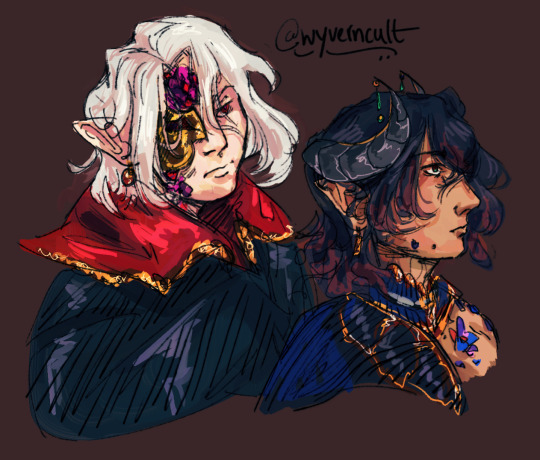
they are very shanoa and albus. i miss them
#bloodstained#ritual of the night#curse of the moon#bloodstained ritual of the night#bloodstained curse of the moon#rotn#cotm#gebel#miriam#miriam bloodstained#gebel bloodstained#my art#Smiles. imstill awake.#miriam's eyes were red and green but the filters fucked it up? wtf#edit ; if htis shows up in either character tags + its disruptive let me know i'll change the caption#just missing them. and ooe
71 notes
·
View notes
Text
EPISODE 8 IS UP!
Questions: In the wake of the crash, the crew of the Mellifera turns to B for answers. She is unhelpful.
CLICK HERE TO LISTEN ON SPOTIFY
11 notes
·
View notes
Text
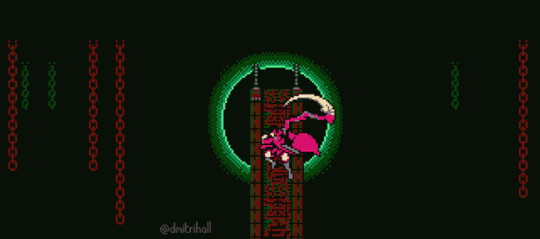
FALLEN MOON'S REQUIEM
#bloodstained#bloodstained curse of the moon#cotm#bloodstained ritual of the night#ritual of the night#curse of the moon#rotn#zangetsu#zangetsu bloodstained#mine#edit#*waves* hi#sorry to the rotn tag. it's like adjacent right#editing this took an embarrassing amount of time. i kept running into glitches LOL
28 notes
·
View notes
Text

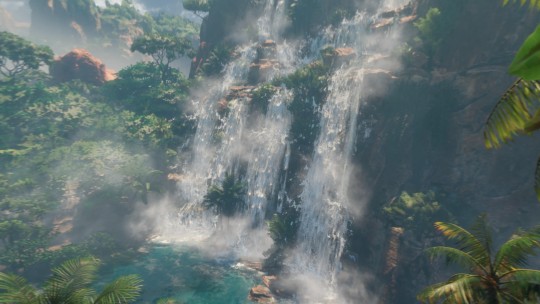
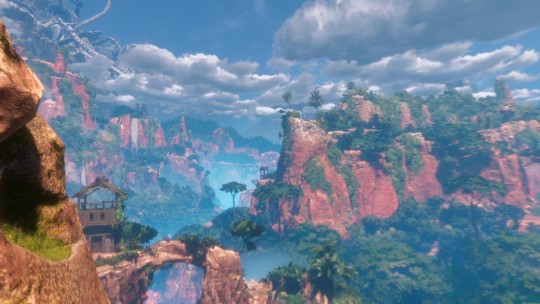

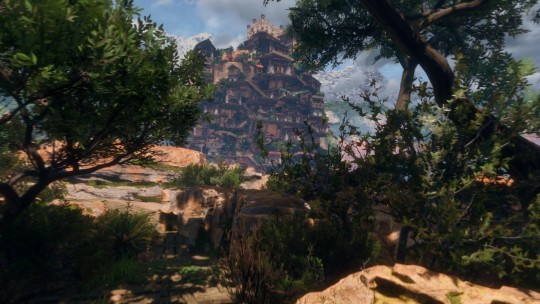



call of the mountain
17 notes
·
View notes
Text
tinfoil hat time, since there's only three more days 'till Call of the Mountain is released and theorizing becomes moot.
Also, i just can't let go that there keeps being mention of Ryas's face and/ or identity is important in relation to the Carja's lore and history.
**As always, spoiler discussion for Horizon Forbidden West**
I know it's primarily VR marketing with playing first person yadayada that you don't see the protag's face but consider: the narrative impact of a face/ identity reveal.
Ryas would need to keep his face covered to conceal his identity for multiple reasons, the least of which are:
clearly identifiable upperclass Carja family marks
notorious reputation as established from the Red Raids and known reputation as a member of the Shadow Carja
tribal grudges against the Carja at large due to the Red Raids
If nothing else but to have direct character and narrative parallels to, Nil is another character who keeps his identity concealed:
clearly identifiable family marks as an upper social class Carja (Ligan of the Hunter's Lodge has the same markings as Nil, so reasonably noble class, especially given the history of the Lodge's membership requirements)
notorious reputation established from martial renown in the Red Raids (conversation overheard from guards during the Looming Shadow main quest about Battle of the Daunt and Cinnabar Sands skirmish)
tribal grudges against the Carja at large due to the Red Raids (as said explicitly by Nil, of specifically the Tenakth holding vicious grudges from the time of the RR, but also seen in the animosity held by the Nora and Oseram, and reticence of the Banuk towards the Carja)
It is of great emotional importance to reveal Red Teeth as Nil as a marker of progress and growth in his personal character arc. It's a definitive sign of vulnerability and trust to a person he clearly regards closely and equally.
The emotional significance of reclaiming identity is very important to those who are or were disgraced by their actions or in regard to their honour code. We've seen it in Nil, maybe we'll see it with Ryas; and hopefully, a connection between the two.
#cor writes#cor's meta analysis#cor theorizes#call of the mountain#horizon call of the mountain#cotm#cotm meta#cotm ryas#horizon forbidden west#hfw#hfw nil
19 notes
·
View notes
Text

Noob Saibot design for an upcoming crossover project.
11 notes
·
View notes
Text
An official commemorative wallpaper drawing from Inti's official Twitter!

#bloodstained curse of the moon#bloodstained#bloodstained curse of the moon 2#cotm#cotm2#bloodstained zangetsu#bloodstained dominique#domigetsu#zangetsu x dominique#dominique x zangetsu#look how he holds her!#bro fought a demon not once but TWICE to save her#and got between her and the barrel of Robert's gun#you can't tell me they deeply love each other#bloodstained chronicles
10 notes
·
View notes
Text
Started playing the demo version of Horizon Call of the Mountain and let me tell you…
I did not expect watchers to be that big from an eye-level perspective. 🤣
And the snapmaw attack scared the shit out of me. 🥹
8 notes
·
View notes
Text
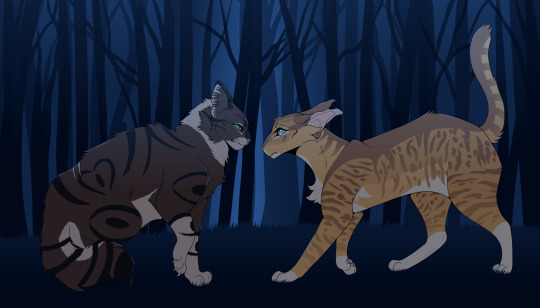

@clansofthemire New Years jamboree gift exchange time!!!! I was so jazzed to get Ruby and draw this little confrontation scene with our characters: Cherrybite of ScaleClan and Tenderheart of TideClan❤️
#my art#warrior cats#warrior cats rp#warrior cats oc#warrior cats ocs#gift art#clansofthemire#cotm#scaleclan#tideclan#cherrybite#tenderheart
7 notes
·
View notes
Note
Any highly qualified opinions on Caius skinning werewolves and making nice clothing for his family? Personally I like to believe he still has a lot of blood on him when he hands them over but that is just me.
(okay so I know this was probably meant as a fun light-hearted ask, but have to go into infodump mode for this because i am, in fact, insane. sorry in advance;; )
(also content warning for topics of gore, torture, and animal death.)
In my mainverse, Caius went through two main stages when it came to how he both thought of and interacted with the Children of the Moon—aka werewolves.
In the first stage, the Volturi have won their entirely-too-long war with the Dacian (Romanian) coven, the few remaining Egyptian coven remain silent under the thumb of the Volturi, and they have gained a secure, mutual alliance with another powerful vampire clan, the Jiangshi (Chinese) Coven. The Volturi have finally gained order after thousands of years climbing their way into power, fighting tooth and claw for it. Now on top of that pecking order, they have time for the first time in many years to relax and focus on personal pleasures and leisure.
Caius specifically is no longer required as one of the main battle strategists, and is given time to himself. It’s important to note that the centuries of merciless violence and bloodshed that comes with war, has left Caius numb to an empathy that he previously had. Killing, and even torture, now comes as easy to him as breathing. On top of that, with all the previously mentioned, Caius winning the war, and knowing he’s good at what he does, is left with a bit of an unchecked ego and bloodlust.
It just so happens that Caius has a peaked interest in the hunting of werewolves. He has fought them before during accidental encounters, and knows how to kill them. Though he has never had the pleasure of seeking them out himself, only hearing tales shared amongst the guard. He is righteous in his claims that they be wiped out, as a danger to both vampires and humanity itself. He wants to seek out their destruction, and reveal in the bloodshed and victory.
So, Caius puts a team together. It consists of himself, Athenodora, Felix, Santiago, and a good handful of minor guards. They set out on horseback, swords, spears, and all. They find werewolves every so often, and kill them with ease. But what they’re looking for is packs. So they spend a considerable amount of time tracking and mapping out areas of suspicion, and taking them out one by one.
This map gets so far that where it once started in central Europe, ends up spanning all the way to east Asia. And so with their agreed alliance, the Volturi team up with the Jiangshi to wipe out werewolves to their extinction.
Within this period, Caius lets his artistic side flair whenever he returns to Volterra. Him and Athenodora make furs and leathers, that get turned into robes with fur trims, or full blown werewolf fur coats (Aro is particularly giddy when he is gifted one of his own.) The teeth and bones are turned into tools, such as hand-tapping gear, and weaponry, usually used to kill other werewolves. He even saves some of their blood to feed to any starved and feral prisoners within the Volturi walls, knowing the poisonous effect it has when consumed by vampires, and how their bloodlust will prevent them from resisting.
His biggest pieces were placed in one of the Volturi’s trophy/museum themed rooms. There you could find a wolf’s head mounted to a plaque. The other, much grander piece, was a full-scale taxidermied werewolf. If not for the morbidness, it was incredible to behold.
However, something occurs that changes everything. While out clearing out a pack in the middle of a winters night, nearing dawn, and full of his newfound and unjust cockiness as ever, Caius is overwhelmed and attacked by a werewolf. It knocks him off his horse, and the dead corpse pins him to the ground, enough of a distraction for the wolf to charge him, the weight of the wolf clambering over his pinned down leg is enough to shatter his ankle and break his tibia completely.
Its claws rips through his abdomen with ease during their struggle, hands scratching at his chest and neck in its attempt to hold him down, as Caius desperately tries to keep the gigantic open, snapping maw away from his throat, only using his bare hands. He loses two fingers permanently in the process.
It’s only after a swift, last-ditch effort to reach for his blade, is he able to stab the wolf through the side of its mouth once, then shove it through its eye socket. The beast cries out in pain, distracted, and Caius is able to reach his sword and run it into its stomach. It stumbles around, and luck must’ve been on Caius’s side because dawn finally approaches, and he watches through blood-tinted vision as the wolf convulses, grotesquely collapsing into itself as it shifts into its human form. Where its wolf form could’ve taken such an injury, its human side cannot, and instead lays face down in the snow, slowly bleeding out. But Caius fairs no better. Ankle shattered, ribs and shoulder broken, and the inability to do so much as even cry out, the pressure of weight on his throat has crushed his trachea, he can only lie there and wait for death to claim him.
But death does not come. Instead, its Athenodora that finds him, and all but single-handedly carries him back to their ally’s base. He is not only physically mauled and scarred, but emotionally he is damaged beyond belief.
When Caius is well enough physically (only barely being able to stand, now with an amputated leg and a cane), many months later, he removes every trace of werewolf that surrounds him. Every piece that once filled him with pride and triumph, now disturbs him to his core. To look upon it makes him physically ill. In a frenzy of adrenaline-fueled panic, he gathers all the trinkets found in his chambers, empties his closet of fur, rolls up the rug, and once outside he sets it all ablaze, not one single piece or the slightest reminder of it is to re-enter his room ever again. Even the smell of the smoke leaves him sick with fear.
The only thing that remains now of the werewolves within Volterra is the taxidermied werewolf in the trophy room. It is far enough away from Caius’s own quarters that he can’t find the energy to remove it, but he makes sure to avoid that area of the castle like the plague.
#the volturi#volturi#twilight saga#c: caius#werewolves#cotm#twilightsaga#twilight renaissance#headcanon#omg natalie im so sorry i took your ask and turned it into a giant rambling session holy shit FDGJSDHFkSD#LISTEN IM SORRY I JUST HAVE A LOT OF FEELINGS ABOUT CAIUS AND WEREWOLVES AND HIS TRAUMA AHHHH#*#this is actually embarrassing omg wtf#long post#gore tw
24 notes
·
View notes
Text


some castlevania requests from a few months ago!
#castlevania#cv#circle of the moon#aria of sorrow#dawn of sorrow#castlevania 3#castlevania iii#draculas curse#harmony of dissonance#simons quest#castlevania 2#castlevania ii#cotm#aos#dos#cviii#cv3#cv2#cvii#hod#nathan graves#julius belmont#death castlevania#grant danasty#juste belmont#simon belmont#my art#So many. tags.
49 notes
·
View notes
Text
BONUS SHORT: C2C AUDIENCE QUESTIONS
The Barkeep, Captain Winnipeg, and Worker B all answer questions posed by the consumers-- I mean, the audience.
CLICK HERE TO LISTEN ON SPOTIFY!
Note: Barkeep's actor got sick during recording and we were only able to publish one of his two questions. But never fear! We'll get that recorded and out to you guys within the next couple of months.
5 notes
·
View notes
Text
youtube
Aquarius from Castlevania: Circle of the Moon for piano. Sheet music is hosted on NinSheetMusic for free!
#Castlevania#castlevania circle of the moon#CV#Cotm#piano#piano arrangement#aquarius#castlevania aquarius#there is a lot of castlevania on my arrangement page and i am not sorry#Youtube
3 notes
·
View notes
Note
One thing I suggest for the design:
Neck scar.
The lamb got decapitated when they were sacrificed at the beginning of the game. Makes sense for doug to as well

My main Goal was to make his hair poofy <3
because you know.. lamb
9 notes
·
View notes
Text
After listening to the GAIA Cast deep-dives and making up the transcripts for them, it's really obvious in hindsight how many hints get dropped through specific phrasing choices by Narrative Director Ben McCaw regarding certain topics, and I am currently losing my mind at all the hints and character parallels that are in the Jan. 30 Playstation Blog about Call of the Mountain (CotM). link
---
During "GAIA Cast EP. 6: Uncovering the Carja Civil War" [transcript by me here], Ben McCaw and Lead Quest Designer Tim Stobo talk about the divide in the tribe as an interesting tipping point to come into from both a narrative and world perspective. One of the things that particularly caught my interest is the following quote by Ben:
"And one of the things that’s important, like in any civil war, it’s like families have been torn apart, right? It’s one tribe that’s been cut in two and some family members wound up on each side."
This is talking about some more specific instances in sidequests in which we see "the good, the bad, and the ugly" kinds of people within the two halves of the Carja, but the emphasis on seeing how the tribal divide impacts all different sorts of people is another detail that they continue to discuss. It's not just the Shadow Carja refugees in need of food and medicine, and supplies being smuggled by Sun Carja by robbing the richer upper class, but regular everyday civilians like Atral and Elida who are torn apart by the conflict (in a very Romeo and Juliet type fashion).
Which is why I find it especially interesting in the character teaser/ introductions of this most recent blog post, the topic of the divided tribe and divided families in CotM, and the impacts of actions taken during the Red Raids is again brought to our attention:
Guerrilla’s Studio Narrative Director, Ben McCaw, offered us further insight: “Ryas ended up on the wrong side for the right reasons. His family was torn apart, and ultimately, he was incarcerated. This is the story of how he tries to come back from that.”
**HZD and HFW spoilers and further discussion under the cut.
Digging into the topic of families divided and torn apart, we see its most obvious wound in the royal family, and the opposing forces of Jiran vs. his sons Kadaman and Avad, and later, Avad and his half-brother Itamen. In these two opposing relationships, we get to see and explore facets of the complications of the father-son relationship: the father against his sons, and the sons against the legacy of their father.
Morally and ideologically, we know that Kadaman and Avad care for their people and their tribe, in speaking out against the Mad Sun-King's edicts, and paying some kind of price for it. In Kadaman's case, it's his life; for Avad, the faith of the people and the fear of becoming like his father are burdens he will never be able to escape. Where family and fatherhood are meant to be examples of protection and guidance, this bond is warped beyond recognition in regards to Jiran and his sons.
The legacy of the father and the shadow it leaves behind, in both a metaphorical and cultural sense, in one that Avad and Itamen each have to grapple with in the uncertain stage of a ceasefire and afterwards. Metaphorically, they each have their own battles in stepping out from under their father's shadow: Avad as the King of the people and proving his will not become his father's son, and Itamen as a child figurehead for the will of others fuelled by ambition and blind faith. They are pitted against each other as symbols of the divine right to rule, and the cultural aspect of the Sun-Faith -- and the interpretation of Sun's divine will manifested through the power of the rightful king -- continues to perpetuate the intra-tribal divide.
---
Back again to the divide of family, I think it reasonable to assume that differences in faith and ideology to be one of the simplest explanations of families picking and choosing sides. In the Liberation comics, we are told of Urid and Ryas, each highly skilled and formidable in their own right, fighting in direct opposition to each other and in direct support to the ruling figures of each faction. Clearly, their loyalty to the governing powers of each faction is fuelled by something stronger even than the bond of family, and I can think of few other motivators stronger than religious faith and a code of honour to serve those whom you pledge yourself to.
“Having fought for the Shadow Carja, Ryas’ relationship with [new allies] is at best adversarial. He needs to make inroads and amends if he hopes to be accepted.”
"At best adversarial" indicates a potential rivalry with allies known to Ryas, or full-on confrontations to be had with other characters who know of him and his reputation. Given our introduction to Hami, the reluctant soldier charged with escorting Ryas, there is already animosity from within their shared tribe, even with the degrees of separation and association and/or participation with the Raids.
Either way, there looks to be some very interesting tribal conflicts permeating the relationships during CotM, which brings me to the next intriguing thing: the hope of acceptance from these new characters.
Acceptance despite past deeds and choices feels phrased like a kind of welcoming back into the fold, a return of sorts from ostracization or exile. There seems to be a preexisting bond that is under strain if the goal is simply acceptance, rather than "to be trusted".
"Making inroads and making amends" has absolute implied meanings of repairing broken bonds. But a broken bond with who? Given the precedent of reuniting estranged brothers in 'The Queen's Gambit' sidequest, Avad and Itamen show there is hope for rekindling and repairing the fraternal bond. Given this information, the most obvious candidate so far to whom Ryas would be repairing broken bonds with is his own brother, Urid.
---
So, we have the history of brother against brother, and the future hope of reuniting and reconciling said brothers. But what about the hints that "players will [...] be reunited with familiar [characters], though [Ryas'] past has affected these relationships"? Who else is familiar enough from HZD or HFW for us to anticipate seeing in CotM? With all of the promotional imagery of standing between the Sundom and Sacred Lands, I will focusing on potential Carja character appearances, since I feel there may be little in the way of Nora appearances given their cultural reluctance to venture near metal ruins that we will likely be exploring as Ryas.
Given their multiple mentions in Ep 6 of GAIA Cast, Uthid and Vanasha seem likely candidates to make an appearance. Vanasha's reconnaissance abilities and connection to Marad could provide some early intel as to what kind of situation we're heading into, and Uthid's switch in loyalty due to his honour code is an early seed to be planted for the legitimacy of Avad's mercy and willingness to make amends with a former Shadow Carja. As merely a captain, it is not likely that Uthid will have had any interaction with Ryas during the flight to Sunfall, but it presents an interesting common ground for these two weathered soldiers and their levels of involvement .
(Personally, I hope that Warden Janeva makes a brief appearance if for nothing else than to see what their assessment is for Ryas' character and his release from Sunstone Rock.)
And speaking of Sunstone Rock, there's the most obvious character to - hopefully - make an appearance: Nil.
---
Nil as a character is steeped in mystery, with his cryptic eloquence making it difficult to pin down much about his past. However, there are several parallels that draw him and Ryas along correspondent narrative threads that I find too interesting to leave alone.
For starters, an easy comparison of these two is their particular set of skills as hunters and fighters:
"As a master climber, hunter, and explorer, Ryas offers the perfect viewpoint of the sweeping vistas and dangerous wilds of Horizon.”
A significant feature of CotM appears to be climbing, and as we know from the Liberation comics, Ryas's brother Urid is the best climber in the Sundom. Nil is clearly an accomplished climber himself; the climb to the top of the Mesa during the "Cause for Concern - Farewell" quest is a long one with lots of jumping from handhold to handhold and creeping along ledges.
Nil's hunting ability is such that he sees bandits as a more satisfying challenge than hunting machines, even the more deadly combat machines that have emerged in the recent years; stating "They don't get that look in their eyes." (Devil's Thirst Bandit Camp conversation). Ryas' reputation precedes him, as Hami and Kavad -- the Carja escort soldiers -- comment that "everyone says Ryas is a good shot" (CotM State of Play reveal trailer), so clearly his ability with a bow is notable enough to be wary about.
Thirdly, being well-traveled and adept at exploring the world and its metal ruins in search of information is a quality we see in few others. Most other tribes have superstitions concerning the Old World ruins, and so avoid them; or are more pragmatic about its use for profit, as seen with Oseram delvers. We see Nil unafraid to venture into these ruined places, going so far to say "[those] lonely places where people once were, now just a hole cut in the world? Chances are, I was there before. " (Gatelands Bandit Camp conversation)
---
Jon Gonzalez, the Narrative Director during HZD, emphasized Nil's significance as a representation of the effects of war, and clarified that there are elements of his quest narrative that are acts of atonement, of trying his best to balance the wrongs he's committed with a new motivation.
There is a kind of retribution in Nil's brand of atonement in that he hunts those who prey on those even weaker. Even if his claimed motivation is purely to sate his bloodlust, there is still some act of good done through it (Although his descriptions of racing heart, ringing in the ears, and the feeling of a "call to arms from inner desires" all point to chasing adrenaline highs). His acts of atonement are done in an echo of the presumed kinds of actions he took during the raids, of participating in the preying on those with less power. Instead of continuing that path, now he hunts those who would do the same.
"And I think that there are a couple of characters that also highlight really unique aspects of some of the tribes in really idiosyncratic ways. I think that Nil, [...] who seems to have become kind of a fan favorite, the kind of way that he has this kind of unique, sociopathic kind of approach to killing, but the way that that's connected to the lore of the Carja. The way that the Carja were preying on other tribes, and [...] the Red Raids and all of that, the thing [...] is this is a guy who's sort of a monster but knows that he was a monster – and to the best of his ability, kind of regrets it and has tried to atone. "
- Writing Horizon Zero Dawn - Jon Gonzalez interview link
The phrasing about Ryas "ending up on the wrong side for the right reasons" also seems to echo Aloy's impression of Nil upon the conclusion of their first bandit camp raid:
And when asked about a favourite backstory element or quest moment, Ben's comment about how intertwined Nil's questline and story is with the Red Raids and the civil war also seem to be more than just a passing anecdote.
ALOY: So you hunt [bandits] down to help others?
NIL: No, no - for sport. I can’t wait for wars anymore: life’s too short and the thrill of death too sharp. If you kill a tribesman, there’ll be retribution; hunt a boar, they complain if you waste the meat. But bandits? They’re vicious. They always put up a fight. And no one cares if you kill them.
ALOY: I…guess you’re doing the right thing for the wrong reason.
NIL: I’m doing what I love. And what could be wrong with that?
- After completing Devil's Thirst Bandit Camp (HZD)
Tracing his quest path through the game takes you all over the map, although he will only join you for 3 of the 6 bandit camps in the overworld. He is clearly a skilled hunter and tracker to comment on "the surprised splashes [of blood] and scrabbles in the dirt" when next he sees Aloy. The two camps he is always present at seem to hold some significance too. Obviously, he's present at the Devil's Thirst camp on the outskirts of Nora land to start his questline, but the Nora were some of the most affected; he begins his journey of atonement there. The Gatelands camp -- on the Sundom side of the border between it and the Sacred Lands -- is where we learn of his stay at Sunstone Rock, with additional dialogue with him if you've made a stop by the prison and talked with Warden Janeva beforehand. Nil specifically waits for Aloy there; a border between two worlds, a step a little more into the world he is from.
"… if you really pay attention to what’s going on with Nil in those raids on bandit camps, his story is kind of interwoven with the Carja civil war and the Red Raids quite a lot, and he has a very, of course, unique and kind of homicidal insight into all that stuff. So I mean that’s something that I really enjoyed, because if you trace Nil’s paths through the game, a lot of it does in fact involve the events surrounding the civil war."
-- GAIA Cast Ep. 6 - Uncovering the Carja Civil War
Janeva's opinion on those kept within the prison and those who are released also vary significantly. The sidequest "Sunstone Rock" charges us with fulfilling the bounty on the 3 escapees, the Rock's most dangerous criminals. Janeva's assertion that the prisoners would have eventually found death are a stark contrast to the quiet surprise when Aloy asks after Nil, and the turn his path took when he left. And as we see again with Ryas, Sunstone Rock holds significance for those who are released from the prison to go forth on a turning point on their personal journey.
"[...] there’s a couple other characters that are associated with Sunstone Rock, including Nil. So if you talk to Nil enough, you’ll find out that he was actually imprisoned in Sunstone Rock at one point. And there’s also a character, an important character actually, that was imprisoned at Sunstone Rock that we are going to learn more about in the future."
---
It feels significant that Ben teases an upcoming character from Sunstone Rock that will be a person of importance in learning more about the world. What can we learn from Ryas' position in a recent, bloody history of tribal conflicts? What new point of view can we experience as someone deeply involved with the old power that split the Carja, and his reaction to the changes in the state of the world now?
All of these exciting questions aside, the biggest mystery of them all at the moment is Ryas' identity: is he at all related to any characters that we have met during the games? With his face deliberately concealed with a cowl in all of the promotional art, there must be some clearly identifiable feature that reveals something about his lineage, presumably a family we already know and recognizable by their Carja eye markings. There are few things as satisfying as a face reveal with deep narrative impact, and I think there is something other than just VR marketing to keep the protagonist 'blank slate', so to speak.
And we have a precedent for an impactful face reveal with satisfying emotional-narrative payoff: Nil's reveal to Aloy after winning the final Gauntlet race. It's a reunion after parting in circumstances of uncertainty; a reconciliation with actions and attitudes of the past and a display of healing and contentedness in themselves in the present. And in this reunion, Nil displays an almost parental affection in how he talks about the other Tenakth racers and refers to them as children.
---
Horizon is, in a way, the story of parents and their children, and coming to terms with what is left behind for the children.
We see it in Rost and Aloy and his willingness to do anything to protect her; we see it in Lis and Aloy and the power of hope, of wishing the world to be better for those who come after.
We see it with Jiran and Avad, of the legacy of the father and the challenges of the son to step out from that shadow.
The phrasing "family torn apart" makes me think there is more than just the fraternal bond to come back to and resolve. With the emphasis and importance on the father-son relationship in Carja culture, it feels like a reasonable conclusion that there will be some exploration of that paternal relationship in regards to Ryas.
Nil has shown tremendous personal growth in his ventures into the Forbidden West. He has found a healthy outlet for his adrenaline rushes in racing, and a kind of healing from the atrocities of his past in the acceptance of group that he explicitly refers to as children -- and children from an tribe that were explicitly wronged during the Red Raids.
What better parallel than to have a father finding healing and acceptance from his son who what also harmed and wronged by the Red Raids?
#cor writes#cor's meta analysis#horizon call of the mountain#call of the mountain#cotm#horizon meta#cotm meta#i am losing my marbles#i am practically bursting with the potential of it all#shoutout to the niloy hell discord#we're gonna be feasting on new lore and content with cotm and i could not be more excited#horizon meta and theories
18 notes
·
View notes
Text

Final Swing Spider-Man suit.
2 notes
·
View notes